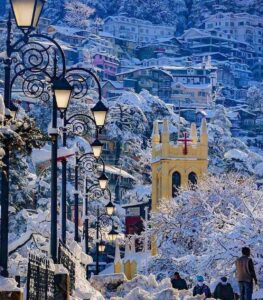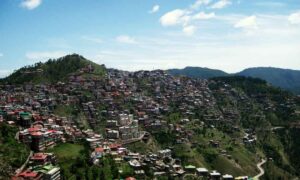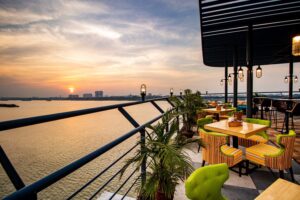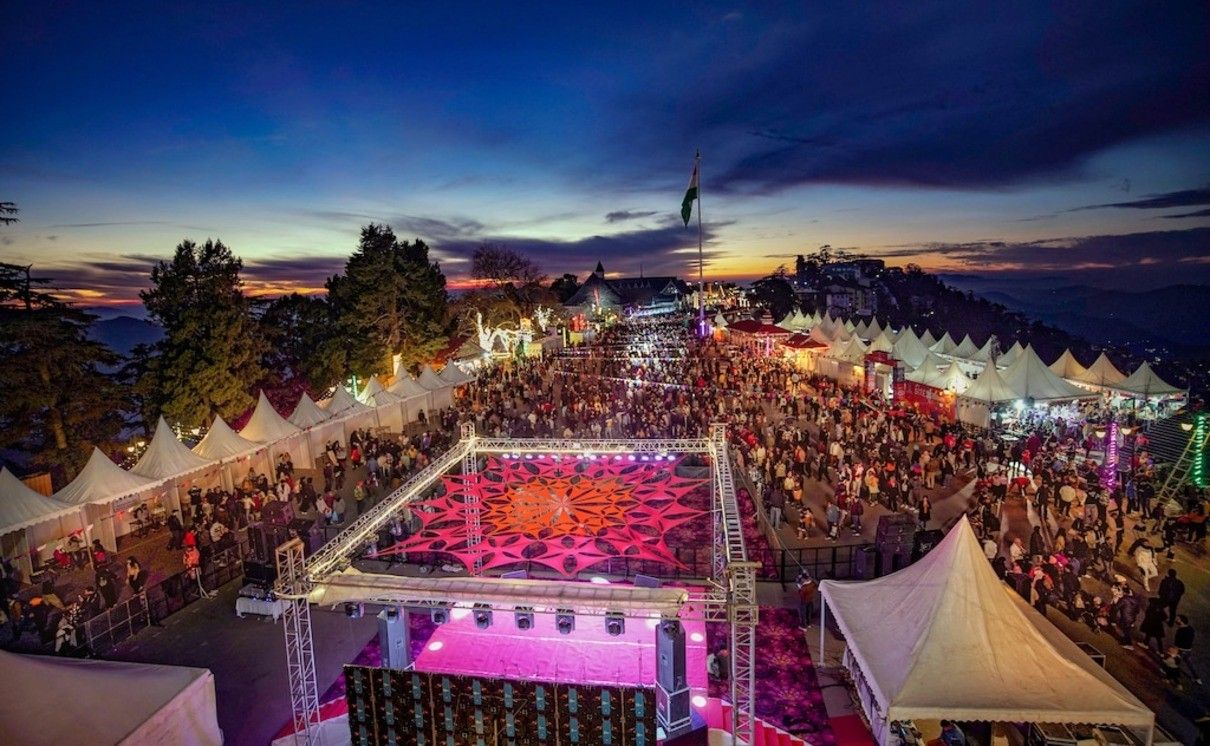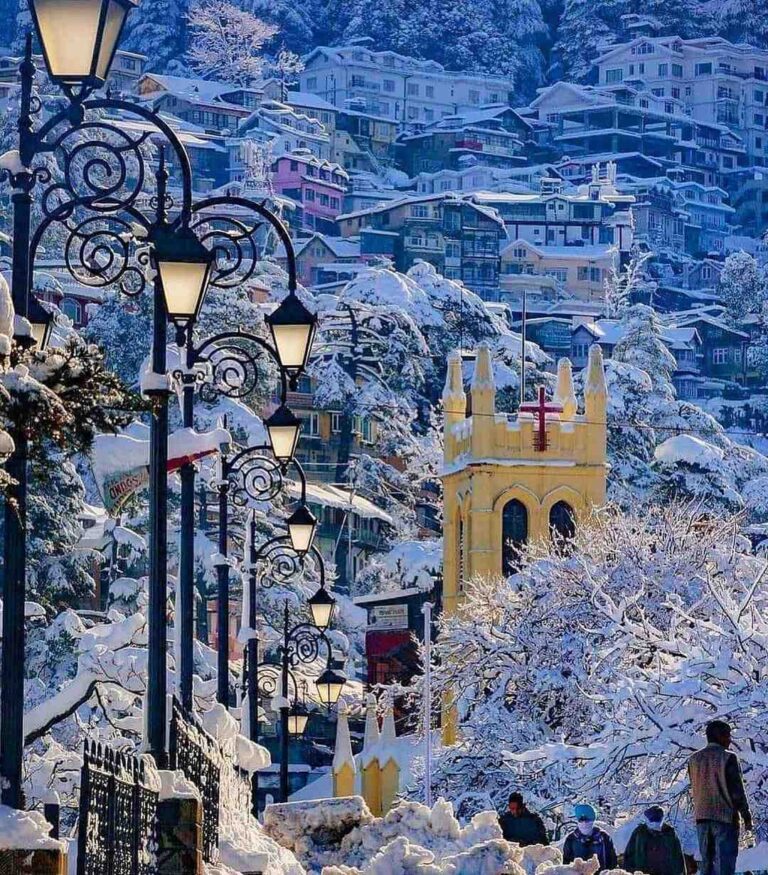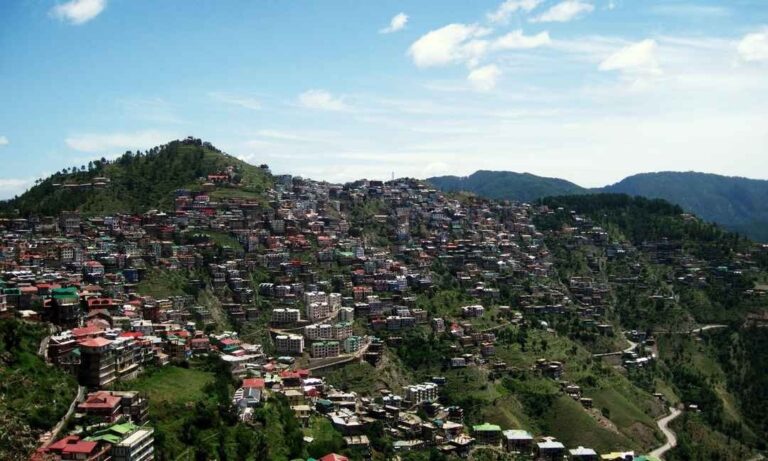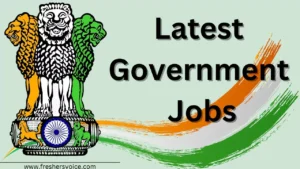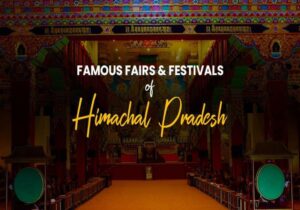Shimla, perched in the Himalayas at about 2,200 meters above sea level, has charmed travelers for centuries with its misty mornings, colonial architecture, and the rhythm of seasons. But beyond the postcard views and scenic walks, Shimla pulses with culture—festivals, fairs, and events that showcase local heritage, arts, food, and community. If you time your visit right, you won’t just see Shimla; you’ll live it.
Here are the top 5 events in Shimla that you truly can’t miss—plus stories, tips, and everything you need to plan ar
1. Introduction: Why Shimla’s Festivals Matter
Shimla isn’t just a mountain retreat; it is a cultural crucible. The overlap of Himalayan tribal cultures, colonial history, modern Indian trends, and natural beauty makes it a rare place where events are not just for tourists—they are lived experiences for locals too. Festivals in Shimla aren’t simply about entertainment: they are about identity, community, and continuity of tradition.
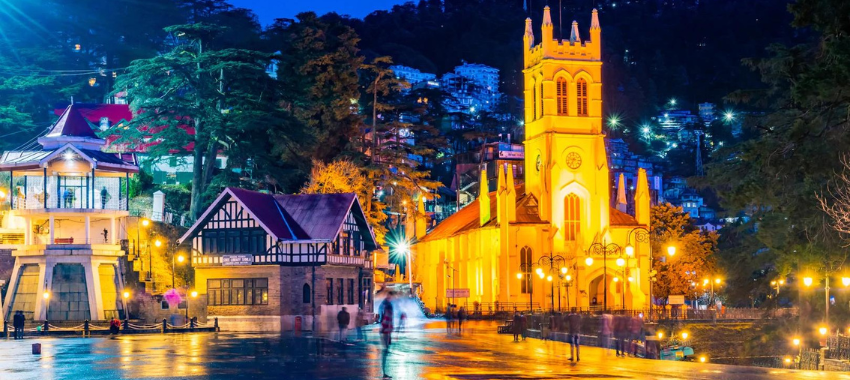
When you attend a Shimla festival, you see more than just performances. You see mothers and daughters stitching local costumes, you see children learning to dance Nati or perform folk songs, you see markets reviving old crafts, you taste apple cider, hear accents from every region of Himachal, and breathe air that’s crisp with pine, snow, or fresh rain. These events stitch together the fabric of Shimla’s cultural identity and also fuel its economy. Tourism, local artisans, food vendors, cultural troupes—all benefit when festivals are well‑organized and draw crowds.
For a traveler, attending a Shimla festival offers:
- Immersive exposure to local culture in a way that passive sightseeing doesn’t
- Opportunities to taste authentic regional foods, crafts, music
- Photogenic moments—with landscapes, traditional dress, costumes, lights, snow or flowers depending on season
- A chance to understand changing social themes (environment, women empowerment, drug awareness etc.) through public discourse embedded in festival activities
With that in mind, let’s dive into the top 5 festivals and events you absolutely should try to plan around during your visit to Shimla.
2. Overview of Shimla’s Cultural Landscape
Before zooming in on individual events, there are important contextual features you should know.
- Seasonal Cycles: Shimla experiences distinct seasons. Summers (May–June) are cool and lush, monsoons (July–August) are wet and can lead to landslides, autumn (September–November) offers crisp weather, and winter (December–February) brings snow and cold. Events are often scheduled to make the most of these windows.
- Colonial Architecture & Heritage: Many venues—such as Ridge Ground, Gaiety Theatre, Mall Road, historic buildings—carry colonial-era design. They add an aesthetic backdrop to festivals: imagine a folk dance under old British‑era wooden eaves, or a film screening in a theatre built in the early 1900s.
- Local Culture: Himachal Pradesh has a rich culture of folk arts: Nati dance, folk songs, traditional handicrafts (wood, wool, apple‑based products). Many festivals are deeply rooted in folk culture, rural arts and agriculture.
- Government and Community Support: The Himachal Pradesh government, local municipal bodies, self‑help groups, NGOs often partner to organise and promote festivals. Themes like women’s empowerment, drug awareness, environmental sustainability are increasingly common.
- Tourist Infrastructure & Issues: Good road networks (though sometimes disrupted by landslides), options for lodging from luxury to homestays, decent connectivity (air/train/road). But in festival‑peak periods, infrastructure (hotels, restaurants, local transport) can become stressed. Crowd management, waste, environmental impact are challenges.
Knowing this, you can more smartly plan your trip, choose which festival aligns with your interests, budget, and tolerance for crowds or weather.
3. Top 5 Events in Shimla
Here are the five festivals that stand out in terms of cultural depth, popularity, diversity of experience, and how signature they are to Shimla’s identity. For each, I provide recent (2024‑2025) updates, what you can expect, and tips.
3.1 Shimla Summer Festival (International Shimla Summer Festival)
A. What & Why It’s Special
The Shimla Summer Festival (often called International Shimla Summer Festival) is perhaps Shimla’s flagship cultural event. It is a many‑layered celebration of arts, performance, local culture, food, and social themes.
- History: The Summer Festival has been held since the 1960s (1960) as a part of efforts to promote tourism and showcase Himachal’s culture. Wikipedia
- Purpose: Beyond tourism, the festival aims to revive local traditions, promote arts, engage youth, and increasingly address social issues. In 2025, the themes include “Drive Against Drugs” and “Beti Bachao, Beti Padhao” (Save the Girl Child/Educate Girl Child). Himachal Tonite+2The Tribune+2
B. When, Where, Format (2025 Data)
- Dates: 1 to 5 June 2025. Himachal Tonite+1
- Main Venues: The Ridge (Ridge Maidan), various cultural venues across Shimla (Mall Road, Police Reporting Room Zone, amphitheaters etc.) Himachal Tonite+1
- Performers & Activities:
- Celebrity performances: Bollywood singers (e.g. Nidhi Rastogi, Akhil), regional artists (Honey Negi, Geeta Bhardwaj). Himachal Tonite
- Folk ensembles from other Indian states (Haryana, Punjab, Jammu & Kashmir via NZCC Patiala) Himachal Tonite+1
- School children’s performances each day, cultural nights (Hasya Kavi Sammelan, folk nights, etc.) The Tribune+2Himachal Tonite+2
- Flower shows, table tennis championships, baby shows, inter‑school debates/essay writing etc. Himachal Tonite
C. Key Highlights & Stories
- Maha Nati & Nati Dance: On the third day in 2025, “Maha Nati” featuring women (e.g. from self‑help groups or Anganwadi workers) performing Nati dance, traditional attire, was a standout, embodying culture + women empowerment. The News Mill
- Market Revival: Alongside performance art, one unique objective is reviving old market identities in Shimla—restoring historic market features, promoting local crafts. The Tribune+1
- Social & Environmental Initiatives: For example, in the closing ceremony of Summer Festival 2025, the Chief Minister launched a “Plastic Neutral Himachal‑2030” awareness campaign, Clean Shimla Drive, cycle runs, etc., serving dual purpose of celebration + civic responsibility. Web India News
D. Who It’s Best For
- Cultural Enthusiasts: Those who want folk music, dance, poetry, and interactions with artists.
- Families & Youth: Inter‑school competitions, lighter daytime shows are suitable for all ages.
- Photographers & Nature Lovers: Early June offers lush greenery, picnic mood, flower shows, nice lighting.
- Travelers interested in social themes: Given the themes (drug awareness, women empowerment, etc.), these events offer deeper insight into Himachal’s social concerns.
E. Practical Tips & Considerations
- Accommodation: Book well in advance. Hotels near Ridge, Mall Road fill up; homestays may offer more authentic experience.
- Clothing: Mornings and evenings can be cool (10‑15°C), so carry layers; daytime may be pleasantly warm if sunny.
- Crowds & Timings: Evenings tend to be more crowded; plan to reach early for popular evening shows; for daytime events like flower shows, baby shows, etc., you may have more flexibility.
- Transport & Movement: Mall Road & Ridge often see traffic; walking is better in central areas. Be prepared for some walking, steps.
- Tickets & Entry: Many events are free; some celebrity shows may have ticketed seating. Check official festival schedule.
- Cultural Etiquette: Folk dancers or local troupes often have rituals; respect photography rules, local customs.
F. Challenges & What’s New
- Weather Risks: Rain or unexpected weather may impact outdoor events.
- Preservation vs. Modernization: Restoring markets may conflict with commercial pressures.
- Environmental Impact: Large influx of tourists means more waste, resource consumption. Efforts like “Plastic Neutral Himachal” show awareness.
3.2 Shimla Winter Carnival
A. What & Why It’s Special
Shimla Winter Carnival is newer compared to Summer Festival, but has quickly become one of the most talked‑about events in Shimla’s annual event calendar.
- It combines the festive spirit of Christmas / New Year with local culture, winter sports, food, and craft fairs.
- It aims to extend tourism season (which often drops after monsoon) into the cold months, offering a sublime winter experience in the hills.
B. When, Where, Format (Recent Data)
- Dates (2024‑25): Scheduled from 24 December 2024 to 2 January 2025, but due to state mourning for former PM Dr. Manmohan Singh, many events were postponed and resumed from 2 to 8 January 2025. Punjab Newsline+1
- Venue: The Ridge Ground is the central venue. Mall Road, Gaiety Theatre, and local grounds also featured. Hindustan Times+2Himachal Tonite+2
C. Key Highlights & Experiences
- Cultural Parade & Maha Nati (women’s folk performance): For example, 450 women from Anganwadi / self‑help groups performing Nati in the opening event. The Tribune+1
- Music Concerts: Bollywood playback singers, regional artists, Sufi performances (e.g. Satinder Sartaaj) etc. Himachal Tonite+1
- Food & Nightlife Extensions: Restaurants, dhabas allowed to stay open longer (24 hours around Christmas/New Year period) to cater to tourists. Stall markets, local food specialties, winter desserts etc. The Tribune+2The Hindu+2
- Special Shows, Fashion, Workshops: Fashion shows, traditional costume displays, workshops, contests like “Winter Queen” or “Voice of Shimla” etc. Himachal Tonite
D. What Makes Winter Carnival Stand Out
- The contrast of cold, maybe snow, with warm lights, music, bonfires, traditional attire—gives Shimla a magical “winter wonderland” feel.
- The sense of community is strong: locals and tourists mix, performing groups from all districts participate; culture is center stage across many parts.
- Good opportunity for photographers and travelers who don’t mind cold and want fewer crowds compared to peak summer.
E. Practical Tips & Considerations
- Dress Warm & Prepare for Weather: Snow, ice, cold winds are real. Thermals, waterproofs, gloves, good boots are musts.
- Transport & Access: Roads may be affected by snow; check weather; allow extra time; sometimes flights/buses are delayed.
- Accommodation: Book early, find lodgings with heating, perhaps fireplaces.
- Crowd Management: Major shows will draw people; plan arrival times; consider less busy days (mid‑carnival rather than opening/closing).
- Food & Health: Cold weather puts extra stress; stay hydrated; warm food; avoid walking barefoot, carry basic medicines.
3.3 Shimla Ice Skating Season & Ice Skating Carnival / Natural Ice Rink Events
While not always a distinct “festival” in itself, Shimla’s Ice Skating events tied to the natural ice skating rink are experiences you’ll regret missing if you visit in winter.
A. Why the Ice Skating Rink Is Historic
- The Shimla Ice Skating Rink, located near Lakkar Bazaar, is one of Asia’s oldest natural outdoor ice rinks. It has colonial origins and remains a major winter attraction.
- Skating has been a way of life for people here; in some winters, competitions are organized, and the rink draws skaters from all over India.
B. When & What to Expect
- Season: Generally December through February, depending on weather. (Exact dates depend on sufficient ice formation.)
- Activities: Free/public skating sessions when ice is available, competitive races (Gymkhana events), fancy dress skating, sometimes ice hockey exhibitions, torchlight parades, etc.
C. Stories & Recent Examples
- In recent winters, after periods of no snow or warm spells which make ice formation unpredictable, there has been a sense of excitement every time the rink opens. Locals and visitors alike flock to put on skates.
- The Gymkhana Carnival (when held) sees categories by age. Children often take part. It’s a festive mood, with laughter slipping on ice and joyous camaraderie.
D. Practical Tips & What to Bring
- Check announcements: Before you travel, check if the rink is open; some winters it’s delayed or canceled due to inadequate ice.
- Gear: Bring or rent good skates, warm gloves, knee/elbow covers if you’re a beginner, thick socks, waterproof outerwear.
- Timing: Morning sessions may have firmer ice, fewer crowds; afternoons/evenings cooler but icy and more crowded.
- Safety: If you’re not experienced, attend a coaching or guided session first; slips and falls are common.
E. The Broader Impact
- This is part of “winter sports tourism” and draws people who might not come in summer. It helps diversify Shimla’s appeal across seasons.
- Also helps preserve a cultural tradition; generation after generation learning skating, displays of local winter culture.
3.4 International Film Festival of Shimla (IFFS)
A. What It Is & Why It Matters
The International Film Festival of Shimla is more than just screenings—it’s cinephilia, art, workshop, and exchange. It brings filmmakers, students, critics and local audiences together, showing different forms of cinema (feature, short, documentary, animation, music videos), often with focus on regional and independent films.
- Provides exposure for Indian regional filmmakers and international entries.
- Encourages discussion of social, environmental, and cultural issues through film.
- Offers workshops and master‑classes that can be challenging to find in more remote places.
B. Recent & Upcoming Editions
- The 11th International Film Festival of Shimla (IFFS‑2025) is scheduled for 5‑7 September 2025. The venue is Gaiety Theatre, The Mall, Shimla. Also, special screenings will happen in Model Central Jail Kanda, Shimla & Model Central Jail Nahan, Sirmaur for prisoners. INTERNATIONAL FILM FESTIVAL OF SHIMLA
- The festival includes competitions (International, National, State level), non‑competitive focus sections, film screenings, master classes, animation etc. INTERNATIONAL FILM FESTIVAL OF SHIMLA
C. What to Expect
- Films: A spectrum—feature films, shorts, documentaries, animation. Some are heavy, some light. Many entries will be from independent, regional or experimental filmmakers.
- Special Screenings: Themes or curated sections focused on specific social issues or geographies; sometimes outreach screenings (e.g. to prisons).
- Workshops / Classes: For students or budding filmmakers—how to edit, cinematography, storytelling etc.
- Audience: Mixed—locals, tourists, cinephiles. Intimate theater settings.
D. Practical Tips
- Buy or reserve tickets early for the major screenings. Smaller screenings may be walk‑in.
- Check schedule well in advance since films may screen in multiple slots; also note time overlaps.
- Use this as anchor for travel: September is great weather (post‑monsoon, pre‑winter). Combine film viewing with walks, nature, visits to nearby valleys.
- Accommodation & Food: Choose central lodging to reach theatres easily; consider staying in areas like The Mall, Ridge, or nearby hill‑resorts if you don’t mind driving.
3.5 Himira Saras Fair & Food / Local Craft & Food Festivals
Beyond big signature events, Shimla and its surrounding districts host fairs & food festivals, often organized by local producers, self‑help groups, women’s cooperatives, artisans. While smaller in scale, they offer some of the most authentic cultural experiences.
A. What They Celebrate
- Traditional foods of Himachal (some lesser known or regional variants)
- Handicrafts: woodwork, woolen shawls, handloom, jewelry, local produce like apples, honey etc.
- Local artistry: folk music, dance, poetry.
B. Recent Examples
- Himira Saras Fair & Food Festival 2024 was held from 1‑10 December 2024 in Shimla. It showcased rural artistry and flavors, with self‑help groups participating. Hindustan Times+4INTERNATIONAL FILM FESTIVAL OF SHIMLA+4Web India News+4
- Traditional food carnivals have been organised with government support in Shimla, promoting local foods. Web India News
C. Why These Are Valuable
- Less crowded and more relaxed atmosphere compared to major festivals.
- More opportunity to interact with local artisans, producers: ask them how they make their crafts, see traditional methods.
- Food festivals allow tasting subtle and regional flavours that mass events often miss.
D. Practical Tips
- Come with an appetite and patience: trying many small food stalls gives a better picture than choosing one big meal.
- For crafts, carry small change, check authenticity.
- Visit during daytime, when many stalls are active; evenings may see fewer vendors.
- Combine these fairs with local village visits if possible; many fairs are tied to local religious or village calendars.
4. Other Noteworthy Events & Local Fairs
While the top five are must‑sees, Shimla’s calendar is richer still. Here are some you might want to pencil in:
- Shimla Literature Festival (often called VIBHOR or similar): brings writers, poets, panels, readings. If you love books and discussions, this is a gem.
- Janmashtami Celebrations: temples, processions, devotional music, local community participation.
- Religious Fairs & Local Melas: Village fairs connected to local deities, harvests, seasonal rituals (e.g. in Rohru, Narkanda, Bharara etc.).
- Lavi Fair in Rampur Bushahr: Though a bit of travel from Shimla, it’s historically significant, a trade fair with traditional roots.
These may not always be in Shimla proper, but if you are exploring the region or have flexible schedule, attending them deepens your experience.
5. Planning Your Visit: When, How & What to Expect
To get the most out of Shimla’s festivals, you’ll want to plan carefully. Here are guidelines to help you decide when to go, how to move around, what to expect, and how to avoid common pitfalls.
A. Season & Timing
| Time of Year | Best For | Considerations |
|---|---|---|
| Late May – Early June | Shimla Summer Festival, early blooms, pleasant weather | Expect higher hotel rates; some areas sunny, some with residual chill; possible light showers in pre‑monsoon. |
| Late December – Early January | Winter Carnival, ice events, snow experience | Very cold; roads may be icy; limited daylight; need warm gear; check weather disruptions. |
| September | IFFS, post‑monsoon freshness, fewer tourists | Rain still possible early; some greenery starting to fade; nights getting cooler. |
| November – Early December | Food & craft fairs, Himira Saras, local melas | Weather tends to be stable; good for travel; fewer crowds; cold setting in. |
B. Travel & Access
- Getting There:
• By Air: Shimla has small local airport (Jubbarhatti), but many travelers fly into Chandigarh, Dehradun, or Delhi and then drive.
• By Train: The famous Kalka–Shimla toy train is scenic; this heritage route is slow but offers beautiful views.
• By Road: Well‑connected highways, taxis, buses. However, monsoon and winter seasons bring risk of landslides or snow‑related delays. - Within Shimla:
Walking is often the best. Many festivals take place in central areas like Ridge, Mall Road, Gaiety Theatre. For events further out, use local taxis or shared jeeps. - Where to Stay:
Areas to prioritize:
• Ridge / Mall Road for convenience and walkability
• Summer Hill, Shimla Town for quieter stay with quick access
• If visiting large fairs or events in peripheral areas, lodgings nearby may be more comfortable
C. Budgeting & Costs
- Accommodation Costs: Peak festival times (Summer, Winter) see sharp rises in hotel prices. Homestays and guesthouses may offer more affordable and authentic experiences.
- Food & Dining: Local street food & small vendors are affordable; restaurants will charge more during festivals. Extended restaurant hours may incur premium pricing.
- Event Tickets: Most events are free; celebrity shows or theatre screenings often have ticketed entries. Workshops may have fees.
D. What to Pack / Be Prepared
- Clothing: Layers. Warmwear for winter; light jacket for summer evenings. Rain protection if in pre‑monsoon/monsoon periods.
- Footwear: Comfortable walking shoes; boots or shoes with good grip for ice/snow if visiting winter or skating events.
- Accessories: Gloves, scarves, hats; sunglasses; sunscreen in summer. Power banks and good camera.
- Health & Safety: Basic medicines, especially for cold, altitude (though Shimla is not very high in altitude risk), hydration. Be careful of slippery surfaces in winter.
E. Cultural Respect & Norms
- Dress modestly during religious festivals or temple visits.
- Ask before photographing individuals, especially local performers in traditional costumes.
- Be punctual for events. Performers and organizers often follow schedule.
- Respect environment: carry own water bottle, avoid plastics, dispose waste properly. Festivals are increasingly trying to reduce environmental footprints.
6. Tips & “Insider” Suggestions
Here are suggestions from people who’ve been to Shimla’s festivals several times—and what they do to get more out of the experience.
- Stay 1‑2 days extra around big festivals: One day before and one after. This allows you to avoid peak congestion, and to explore sites without rush.
- Early morning walks: Ridge at dawn is serene, fewer crowds, good light for photos, and you get a different view of the city than the festival hustle.
- Local homestays: If you can, stay with local hosts. They often know where hidden food stalls are, or small impromptu events not on the tourist map.
- Mix big, moderate, and small events: If you attend one big festival (Summer or Winter), also include smaller fairs or craft fairs for balance—less crowded, more intimate.
- Photography tip: During Summer Festival, flower shows and dusk evening performances offer golden‑hour aesthetics; during Winter Carnival, evening lights, snow, contrast.
- Try volunteer or participate: Many festivals seek volunteers for logistics, environment drives etc. This gives a deeper perspective and sometimes free entry or backstage access.
7. Conclusion
Shimla’s cultural gems are not just “events”—they are immersive moments that let you absorb the heart of Himachal: its folklore, its art, its challenges and social conscience, its seasons, its people. Whether it’s dancing with locals during the Shimla Summer Festival, watching snowflakes fall around a winter bonfire, gliding on ice in the old rink, being moved by film stories at IFFS, or sampling rustic food at a village fair—each experience reveals a different facet of Shimla.
If you only plan one trip to Shimla, I’d recommend planning for early June (for the Summer Festival) or late December to early January (for Winter Carnival + Ice events), depending on whether you prefer verdant hills & flowers or snow & cozy winter nights. But whichever festival you pick, approach it with curiosity, warmth, respect—and you’re likely to leave with memories far richer than just the landscapes.
I

